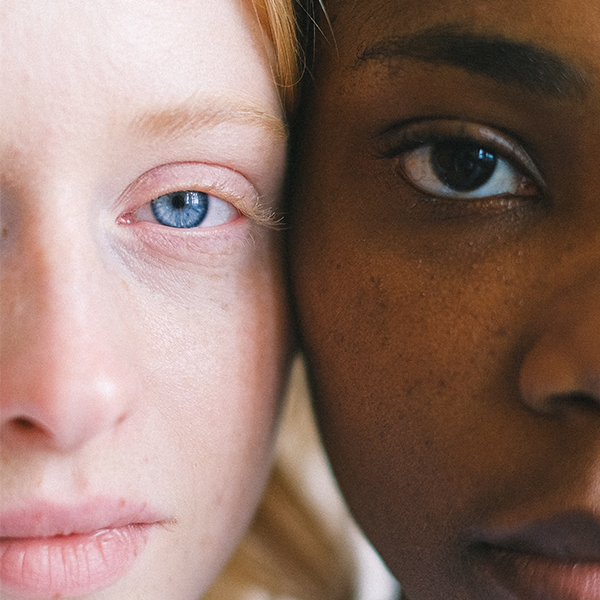Why do we need two eyes to see?

Two eyes (Anna Shvets, Pexels)

Two eyes (Anna Shvets, Pexels)
How does this align with my curriculum?
Ever wondered why we have two eyes (and not one, three or more)? Find how your two eyes work together in this hands-on activity.
What You Need
- Piece of paper
- Pencil
- Table
- Chair
What To Do
- Make a small dot on a piece of paper and place the paper on a table.
- Sit in a chair about an arm’s length away from the paper and close one eye.
- Hold a pencil in your hand and hold your arm straight up.
- Bring your arm down slowly and try to touch the tip of the pencil to the dot. How close did you get on the first try? Did you aim too close or too far? How many tries did it take to touch the dot?
Discovery
Your eyes are placed where they are for a reason — they give you depth perception. That means your eyes can “see” (or “perceive”) the distance of an object. If you couldn’t see something with both eyes at the same time, it would be harder for your brain to perceive the distances between you and the object. Your brain needs to receive a different “picture” from each eye to give you depth perception.
Depth perception helps us move and function in our world. It helps us see how far or near something might be, like a moving car or a ball that is thrown towards us. Depth perception can help keep us safe when riding our bikes or driving a car because these tasks require us to judge distances and manoeuvre around objects and obstacles. When humans relied on hunting for survival, binocular depth perception was necessary to see how far an animal was in the distance so that they could aim an arrow or a spear. Most predators in the animal kingdom have two eyes on the front of their heads, providing them with the depth perception to successfully jump or pounce on their prey.
- Try closing the other eye. Did your pencil land in the same place? Were you more successful with your right or left eye?
- Try to do it with both eyes open. What happened? Why do you think this happened?
For more information on this topic check out these Let's Talk Science resources:
- How do I see colour? (Hands-on Activities) - How is light connected to the colours we see? In this STEAM activity make a colourful light catcher and discover why see different colours?
- How do we see colour? (STEM in Context) - How does the human eye see visible light as colour? And why do some people see more colours than others?
- How We See (Backgrounder) - Learn about how human vision works as well as some common types of vision problems.
What’s happening?
Your eyes are placed where they are for a reason — they give you depth perception. That means your eyes can “see” (or “perceive”) the distance of an object. If you couldn’t see something with both eyes at the same time, it would be harder for your brain to perceive the distances between you and the object. Your brain needs to receive a different “picture” from each eye to give you depth perception.
Why does it matter?
Depth perception helps us move and function in our world. It helps us see how far or near something might be, like a moving car or a ball that is thrown towards us. Depth perception can help keep us safe when riding our bikes or driving a car because these tasks require us to judge distances and manoeuvre around objects and obstacles. When humans relied on hunting for survival, binocular depth perception was necessary to see how far an animal was in the distance so that they could aim an arrow or a spear. Most predators in the animal kingdom have two eyes on the front of their heads, providing them with the depth perception to successfully jump or pounce on their prey.
Investigate further
- Try closing the other eye. Did your pencil land in the same place? Were you more successful with your right or left eye?
- Try to do it with both eyes open. What happened? Why do you think this happened?
For more information on this topic check out these Let's Talk Science resources:
- How do I see colour? (Hands-on Activities) - How is light connected to the colours we see? In this STEAM activity make a colourful light catcher and discover why see different colours?
- How do we see colour? (STEM in Context) - How does the human eye see visible light as colour? And why do some people see more colours than others?
- How We See (Backgrounder) - Learn about how human vision works as well as some common types of vision problems.